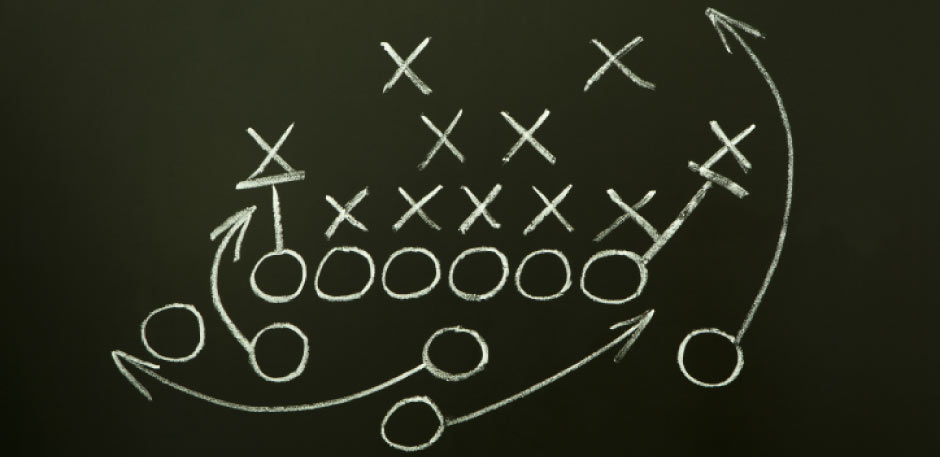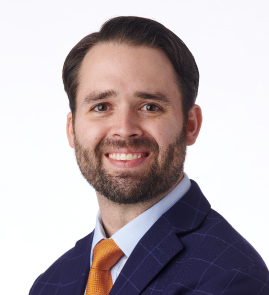It’s first and 10, in the middle of the fourth quarter of a tied ballgame. As the quarterback, your team is depending on you to analyze the defense, call audibles using a combination of states, colors, and numbers, and move the offense down the field toward the endzone.
“Down, set, hike!”
You get the snap, drop back to pass, see your favorite wide receiver running across the field, square your shoulders, and deliver a perfect pass right between the numbers. Just as he catches the ball in stride…
He stops.
Doesn’t look upfield, doesn’t keep running after the catch, doesn’t do anything. He just stops….and gets smashed. When he returns to the huddle, you look at him, wondering what happened. He looks back smugly and says, “What? I’m a wide receiver, I did exactly what I’m supposed to do. I caught the ball.”
When it comes to the game of healthcare, your primary care physician (family doctor, internist, pediatrician) is the quarterback of the team of doctors and healthcare professionals. He knows the playbook better than anyone else on the team, and knows for the most part, what test to order or what play to call and in what situation to call it. He knows what stage of life you are in, when you need immunizations, cancer screenings, eye exams, and other common tests. He communicates with you and with many others including your insurance company (media), hospital administrators (owners), doctors (teammates) physical therapists (trainers), and even talks to your family (fans) about your health. And when you have a condition that is beyond his general area of expertise, what does he do?
He calls a play designed to go to a player with a special set of skills, and passes the ball (you) to his specialist wide receiver, expecting the receiver to not only catch the ball, but to run with it, using his special skills to treat your condition. He passes the ball to the specialist hoping he might even juke a defender or two (insurance claims), read the blocks (special tests/procedures), and get you past the first down and into the endzone (recovery). And when the specialist physician is finished, and your treatment is complete, it is up to him to return you back to the care of your primary care physician, but not just that – and here’s the most important part – when the specialist physician is finished, he must instruct your primary care physician on what was done and how to continue treatment in the future.
As a future ophthalmologist, I will one day wear the uniform of specialist, but for the time being, my uniform is that of a primary care physician quarterback in a family medicine clinic. I recently saw a patient that had been told by his dentist, three emergency room doctors, and two oral surgeons that he “needed to see his primary care physician” as his condition was not serious enough to require the oral surgeon’s specialist skills. However, the specialist failed to realize that the condition was far-beyond the scope of primary care medicine and sending the patient back to the primary care physician would not have accomplished the purpose of seeking the specialist referral. The specialist caught the ball by seeing the patient, but then he stopped, did nothing, and did not provide any instructions to the primary care physician on how to treat the patient in the future. This patient came to clinic, in significant pain and with the expectation that his primary-care physician (yours-truly, a resident physician in training), must be quite the expert physician, as just days earlier, six “specialist” physicians had told him that he “needed to see his primary care physician as soon as possible” and that he “would know just what to do.” While I appreciated his misdirected praise, my temporarily-boosted ego quickly dissolved as I explained to the patient that I was not in fact the expert he was hoping would cure his ailment, but was instead merely the primary care physician quarterback whose pass to the specialist was successfully completed, but not even a yard was gained after the catch. I was hoping the specialist wide receiver would run after catching my pass, but instead he just stopped, got tackled, and left me with no instructions on how to treat the patient in the future.
- Have you ever felt confused or frustrated by having so many doctors?
- Have you ever wondered if your doctors even talk to each other to coordinate your care?
- Have you ever felt like your doctor dropped the ball in communicating with other doctors?
- Have you ever wondered what exactly is the role of a primary care physician?
Next time someone tells you that you “need to see your primary care physician,” think back to the simple football analogy above. What they are basically saying is that they want you to go back to your main signal-calling primary care physician for treatment of your general health issues and further determination of when to call a specialist in the future. When the specialist or anyone else uses the all-too-common instruction to “talk about this with your primary care physician,” you should throw your yellow penalty flag right away. Better yet, toss your red handkerchief and challenge the ruling on the field. Next time you are told to “follow-up with your primary care physician,” ask the specialist the following questions:
- Why can’t the specialist continue treating you?
- Has the specialist finished treating your illness?
- What specific instructions will the specialist give to your primary care physician on what to do next?
- What should you watch for that might require immediate return to the specialist instead of first seeing your primary care physician?
In the game of healthcare, some of us are quarterbacks, some running backs, and some wide receivers, but at the end of the day, we are ALL pigskin-clad patients, and none of us wants to be dropped or fumbled carelessly. It is up to us all, patients, physicians, and all members of the healthcare team to improve communication so that together we can inch our way closer to victory.












Awesome post as always, Steve! 🙂